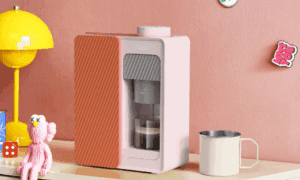Welcome to Trash Talk, where we dive deep into the issues impacting our environment and challenge the status quo. Today, we’re shining a spotlight on an everyday item that has quietly become a major villain in our ecological story: disposable cups. You might not give them much thought as you sip your morning coffee or grab a quick drink on the go, but these seemingly harmless conveniences are wreaking havoc on our planet. Join us as we uncover the shocking truth behind disposable cups and explore sustainable alternatives that can help turn the tide against this environmental nightmare.
Introduction to Disposable Cups
The world goes through a lot of disposable cups. In the United States alone, we throw away around 25 billion paper and plastic cups every year. And that number is only increasing as our to-go culture grows.
While it might seem like an innocuous habit, using disposable cups is having a major impact on the environment. Here’s a closer look at how disposable cups are wreaking havoc on our planet:
- They’re made from virgin materials.
Most disposable cups are made from virgin materials, meaning they require new trees to be cut down to be produced. This contributes to deforestation and habitat loss.
- They’re rarely recycled.
Even if you put your disposable cup in the recycling bin, there’s a good chance it won’t get recycled. That’s because most recycling facilities don’t have the technology to deal with cups made from multiple materials (like a cardboard cup with a plastic lining). As a result, most of them end up in landfills, where they take years to break down.
- They use a lot of water and energy to produce
It takes quite a bit of water and energy to produce disposable cups (not to mention the packaging they often come with). It takes about three times as much water to make a paper cup as it does to fill it with liquid. And all that energy use
Impact on the Environment
In the United States, we use 500 million plastic straws every day.
In the time it takes you to read this sentence, Americans will have used approximately 2,200 plastic straws. And we’re not just talking about the occasional fast food meal; these numbers are for at-home use as well. Disposable cups, plates, and utensils have become so commonplace that we often don’t think twice about using them. But the environmental impact of all this disposability is staggering.
The production of disposable cups and utensils creates significant greenhouse gas emissions. In addition, when we throw away disposable cups and utensils, they often end up in landfills, where they take up valuable space and release harmful chemicals into the environment.
Even if you recycle your disposable cup or utensil, it will likely end up in a landfill. Recycling facilities are not equipped to handle the sheer volume of disposables that are produced every day. As a result, only a small percentage of disposables get recycled. The rest end up in landfills, where they’ll sit for hundreds or even thousands of years before decomposing.
The best way to reduce the environmental impact of disposables is to simply use less of them. Bring your reusable cup or mug with you when you buy coffee or tea on the go. Use reusable dishes and silverware at home instead of disposable plates and cups. And avoid using
The Unseen Consequences of Disposable Cups
When most of us think about the environmental consequences of our actions, we tend to focus on the things that are immediately visible to us. For example, we might think about the pollution caused by factories or the deforestation caused by clear-cutting. But many hidden environmental consequences are not so easily seen.
One of these hidden environmental consequences is the massive amount of waste generated by disposable cups. Every year, billions of disposable cups are used and discarded, creating mountains of waste that end up in landfills. But that’s just the tip of the iceberg.
The production of disposable cups requires a huge amount of energy and resources, including water, trees, and fossil fuels. The manufacturing process also generates pollution, which can contaminate air and water supplies. And once they’re discarded, disposable cups can take centuries to decompose.
All of this has a serious impact on our environment, even though we may not see it happening. So next time you reach for a disposable cup, take a moment to think about the unseen consequences of your choice.
How Can We Reduce Disposable Cup Waste?
In the United States, we use 500 million disposable cups every day. Most of these cups are made from plastic or paper, and many end up in landfills, where they take years to decompose.
Disposable cups are a major source of pollution and waste. They often end up as litter, clogging drains and waterways. And when they’re incinerated, they release harmful chemicals into the air.
Fortunately, there are some simple ways we can reduce our disposable cup waste:
- Bring your reusable cup when you buy coffee or tea.
2. Ask for no straws or lids when ordering drinks to go.
3. Avoid using disposables at events; provide guests with washable cups instead.
4. Recycle paper cups (check with your local recycling facility first).
5. Compost paper cups if possible (composting facilities may not accept them).
Alternatives to Disposable Cups
If you’re looking for alternatives to disposable cups, there are a few options available. One option is to use reusable cups. Reusable cups can be made from a variety of materials, including glass, metal, or plastic. They can be washed and reused multiple times, which cuts down on waste. Another option is to use compostable cups. These cups are made from materials that can break down into compost, making them a more environmentally friendly option than traditional disposable cups. You could simply reduce your use of disposable cups altogether. This might mean using fewer paper coffee cups at home or bringing your mug to the office. Whatever route you choose, reducing your reliance on disposable cups is a step in the right direction for the environment.
Conclusion
Trash talk is real, and it’s about time we all started taking responsibility for the damage disposable cups are causing to our environment. The single-use items may be convenient, but the consequences are far greater than any convenience they provide. Reducing or eliminating your use of disposable cups can make a big difference in helping protect our planet. Try carrying a reusable cup with you whenever possible, and always remember that every small effort counts when it comes to protecting the environment!



































